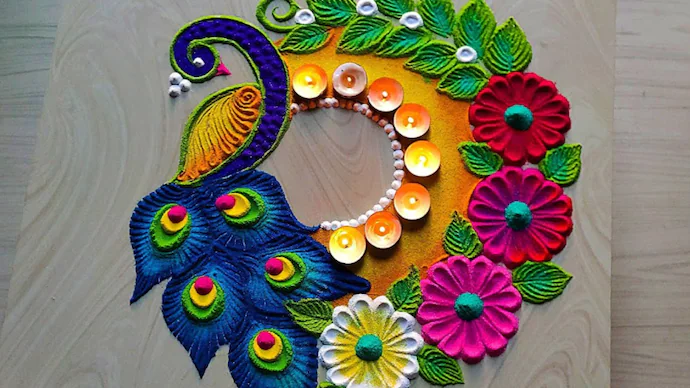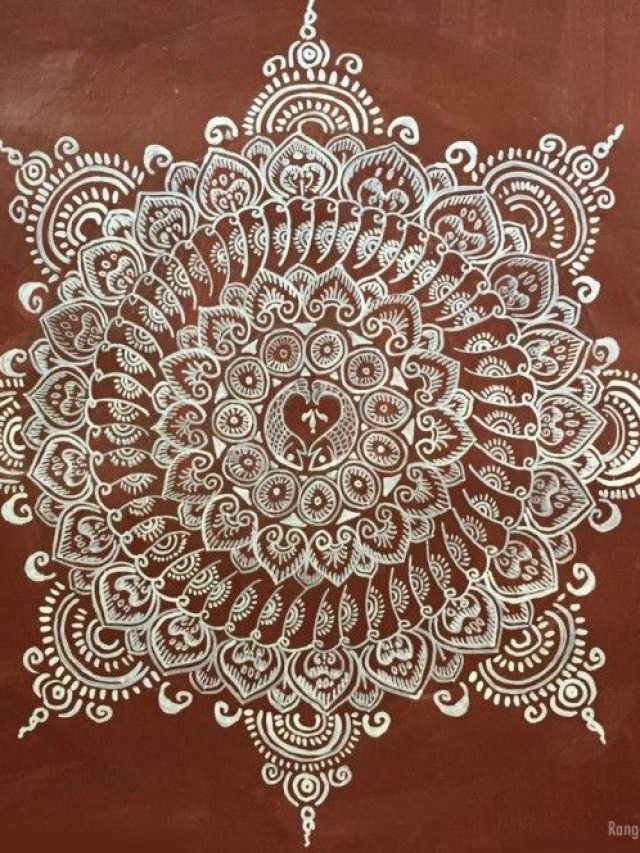Rangoli, an ancient Indian art form, is a vibrant and captivating way of adorning the floors of homes and public spaces during festive occasions. This article will look into the world of Rangoli designs, exploring their significance, history, and the process of creating them. Join us as we unravel the beauty and cultural heritage behind these intricate patterns.
The Significance of Rangoli Designs
Rangoli holds a deep cultural and religious significance in India. The term “Rangoli” originates from the Sanskrit words “rang” (colour) and “Cavalli” (row), signifying a decorative pattern made with coloured powders, rice, flowers, or other materials. Rangoli designs are believed to bring good luck, prosperity, and positive energy to the household.
Historical Background
Rangoli has a rich history dating back several centuries. Initially, Rangoli was created using rice flour as a way to feed ants and birds, symbolising a harmonious coexistence with nature. Over time, it evolved into a form of artistic expression and a medium for storytelling. Various regions in India have their distinct styles of Rangoli, such as Alpana in West Bengal, Kolam in Tamil Nadu, and Madana in Rajasthan.
Materials and Techniques
Creating a Rangoli design requires minimal materials, making it accessible to people of all backgrounds. Traditional Rangoli designs are made using vibrant coloured powders, rice flour, turmeric, vermillion, and natural dyes. However, modern variations include the use of flower petals, coloured sand, chalk, and even acrylic paints.
The process begins with drawing an outline using chalk or a pencil. This is followed by filling the design with colours or materials of choice. Intricate patterns, geometric shapes, flowers, and religious symbols are common motifs found in Rangoli designs.
Festivals and Occasions
Rangoli designs are an integral part of various Indian festivals and celebrations. During Diwali, the Festival of Lights, Rangoli is created to welcome Goddess Lakshmi, the deity of wealth and prosperity. On Pongal, the harvest festival in Tamil Nadu, Kolam Rangoli is made using rice flour to express gratitude to the Sun God. Similarly, during Navratri and Onam, Rangoli adds to the festive ambience and reflects the cultural diversity of India.
Contemporary Rangoli Designs
While traditional Rangoli designs remain popular, contemporary artists and enthusiasts have introduced innovative styles to the art form. Themes ranging from nature, abstract patterns, and even pop culture references can be found in modern Rangoli designs. These designs often incorporate new techniques like stencil work, embellishments, and mixed media.
Tips for Creating Rangoli Designs
If you’re inspired to create your own Rangoli design, here are a few tips to get you started:
a. Choose a suitable location with a clean surface, preferably near the entrance or in a central area.
b. Sketch the design lightly with chalk or pencil before adding colours.
c. Start with a simple design and gradually progress to more complex patterns.
d. Experiment with colour combinations and materials to enhance the visual appeal.
e. Apply a fixative or transparent adhesive to preserve the design for a longer duration.
11 Best Rangoli Designs
1. Peacock Rangoli
The peacock, symbolising beauty and grace, is a popular motif in Rangoli designs. Its vibrant colours and intricate feathers make it a captivating choice for creating a visually stunning Rangoli.

2. Diya Rangoli
Diya, or oil lamp, holds immense significance in Indian culture. Creating a Rangoli design featuring diya patterns not only adds a festive touch but also symbolises the triumph of light over darkness.

3. Floral Rangoli
Flowers have long been an integral part of Rangoli designs. Creating a floral Rangoli allows you to embrace the beauty of nature, with options ranging from simple flower patterns to elaborate bouquets.

4. Geometric Rangoli
Geometric patterns offer a contemporary twist to traditional Rangoli designs. By incorporating straight lines, circles, triangles, and squares, you can create visually appealing geometric Rangoli patterns that exude modern elegance.
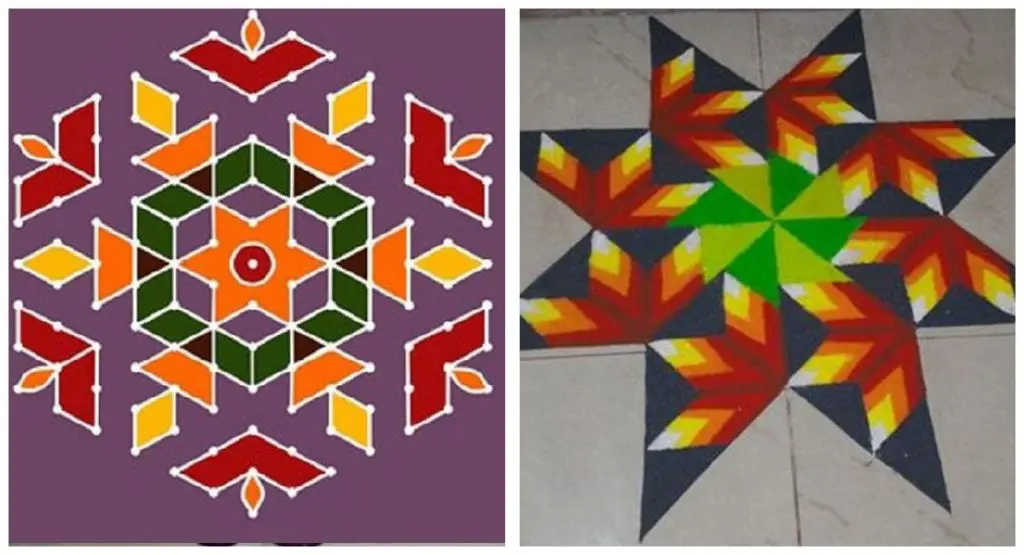
5. Sanskar Bharati Rangoli
Sanskar Bharati Rangoli is known for its elaborate and intricate designs. It often features concentric circles, detailed motifs, and delicate patterns, requiring precision and patience to create.
6. Alpana Rangoli
Alpana Rangoli, also known as Alpona, is a traditional Bengali style of Rangoli. It typically consists of curved lines, flowers, and other geometric shapes, creating a mesmerising symmetrical pattern.

7. Swastika Rangoli
The swastika symbol holds deep religious significance in Hinduism and is considered auspicious. Incorporating the swastika motif in a Rangoli design is believed to bring good luck and prosperity.
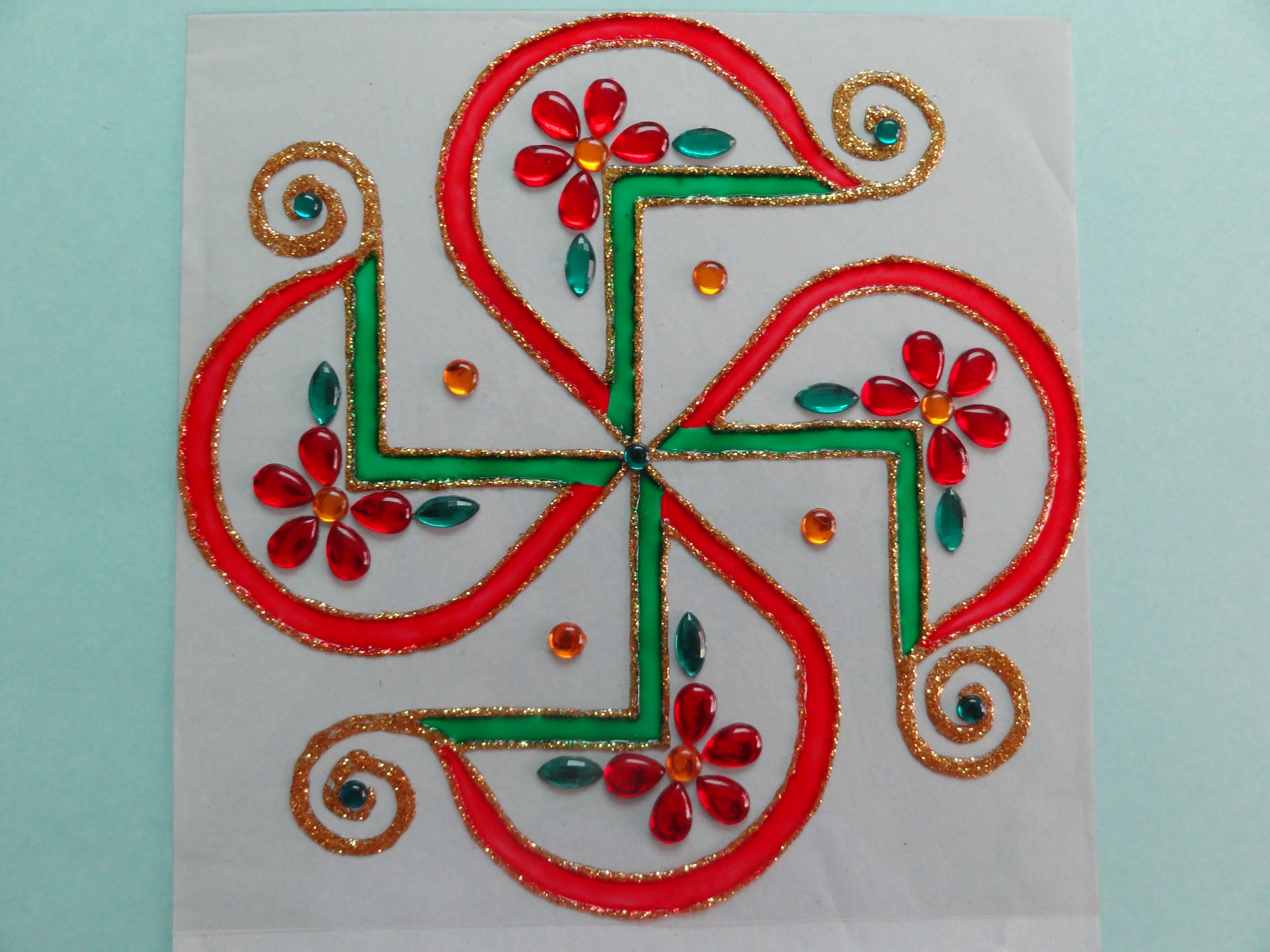
8. Ganesha Rangoli
Lord Ganesha, the elephant-headed deity, is worshipped as the remover of obstacles. Including Ganesha motifs in a Rangoli design adds a spiritual touch while invoking blessings and positive energy.

9. Peacock Feather Rangoli
Peacock feathers are often used as standalone elements in Rangoli designs. Their graceful patterns and vibrant colours make them visually striking and are a symbol of beauty and abundance.

10. Radha-Krishna Rangoli
Depicting the divine love between Lord Krishna and Radha, this Rangoli design celebrates the eternal bond of devotion and spirituality. Intricate detailing and vibrant colours bring this theme to life.
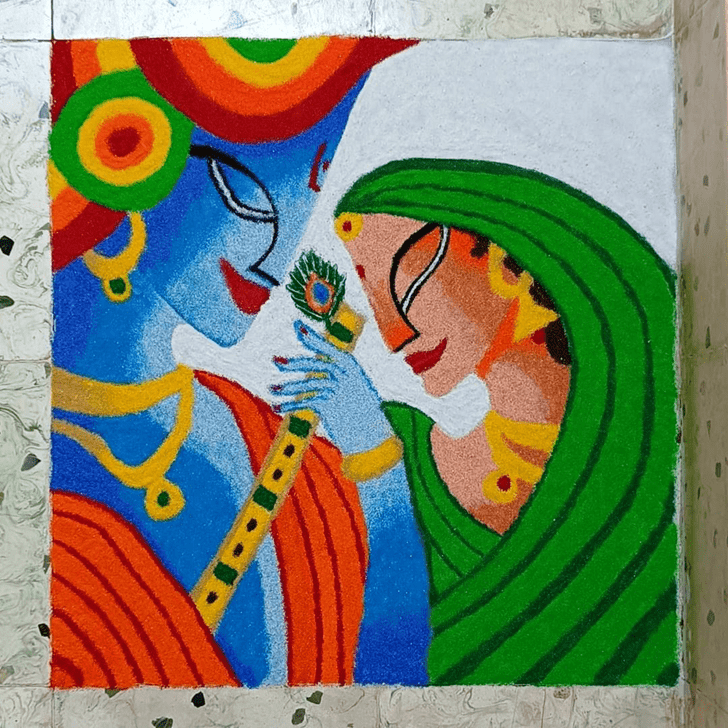
11. Kolam Rangoli
Originating from Tamil Nadu, Kolam Rangoli is created using rice flour. It features geometric patterns, dotted lines, and intricate motifs. Kolam Rangoli designs are often passed down through generations, preserving a sense of cultural heritage.
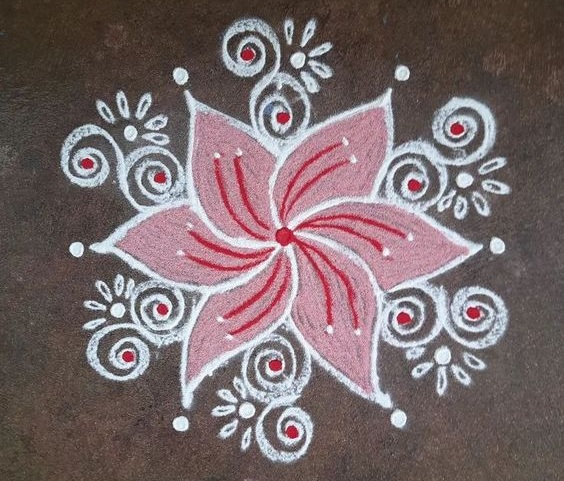
Conclusion
Rangoli designs exemplify the beauty, creativity, and cultural heritage of India. These intricate and colourful patterns not only add aesthetic value to homes and public spaces but also serve as a means of self-expression and celebration. Whether you’re captivated by the traditional motifs or eager to explore contemporary variations, Rangoli designs continue to enchant people around the world with their mesmerising beauty.
Feature image courtesy: Times
Saving the Natural Dyes Art From Dying: The Centuries old Kalamkari Tradition

Contributor

